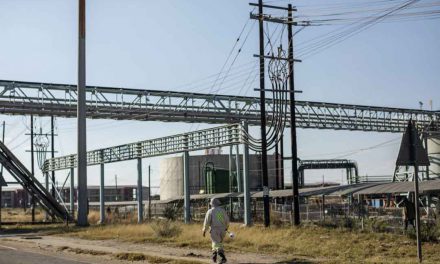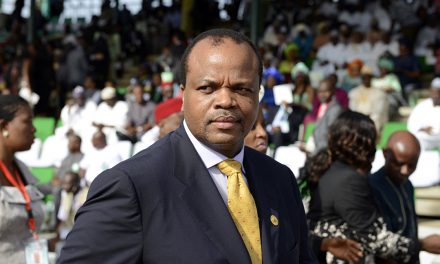
Resource governance is crucial to growth © Helge Fahrnberger
A new natural resource governance vision aims to build Africa’s economies through cooperation between the extractives industry and the continent’s other economic sectors
Over the past five years, the African Union (AU) has become much more committed to natural resource governance. Previously, continental organisations had formulated symbolic proclamations, but with little concrete implementation and follow-up as regards outcomes.
These symbolic proclamations include the 1979 Lagos Plan of Action, which addressed Africa’s need to become self-sufficient, and the 2008 decision of the AU Conference of Ministers to work towards the integration of minerals development policies in regional economic planning. The African Mining Vision (AMV), formally adopted in 2011, is a watershed in Africa’s resource governance.
The AMV aims to move African economies beyond revenue capture by actively developing and incorporating the continent’s mineral resources policies in broader economic frameworks. Aimed at building resilient, diversified economies and so accelerating broad-based development, it advocates social and economic linkages between the extractives industry and other sectors of the economy. The AMV precepts have informed bespoke country mining visions now being implemented in more than a dozen African countries.
Since early 2016, the AU and its AMV-implementing partners have been working to align the lessons from five years of effort to implement resources- driven policies with national- and global-level insights on sound resource governance. Notable here is the Africa Mineral Governance Monitoring Framework (AMGF), now under development with inputs from a range of institutional stakeholders and civil society organisations (CSOs). The AMGF aims to formulate a set of governance indicators for the extractives industry that will monitor progress in transparency, economic linkage and social and environmental accountability in the sector.
Still, the AMV has been fraught with challenges. For one thing, its implementation has largely been the responsibility of AU technical implementing partners: the African Development Bank (AfDB), the UN Development Programme, and the UN Economic Commission for Africa. This devolved arrangement was necessitated in part by the AU’s capacity constraints and the conditions attached to the AMV funding by its inaugural financiers, the governments of Canada and Australia.
An initial disagreement between the AMV implementing parties over the institutionalisation of the Africa Mineral Development Centre as a specialised AU agency appears to be largely resolved. But other challenges persist, including the politics of inter-agency rivalries, donor interference, AU capacity gaps and the funding constraints that affect all AMV partners. The AU Conference of Ministers Responsible for Mineral Resources Development (CAMRMRD) in Livingstone, Zambia, in 2014 sought to address the AU Commission’s capacity deficit by mandating the recruitment of resource governance specialists to complement the expertise already available within the AU’s trade and industry department.
While it does not lack ambition, the AU has struggled to match its technical capability with an integral vision on extractives governance. It also has blind spots with regard to important policy spaces beyond the mining sector. These factors have significant implications for Africa’s ambition to structurally transform its economies. If the AU is to successfully lead Africa’s push for structural transformation, it must become an enabler of regional economic communities (RECs) by setting and monitoring widely shared African standards in resource governance. This focus must cohere with related policy portfolios such as development financing, diversification investments, and economic greening.
If unaddressed, the AU’s continuing capacity challenges may undermine the organisation’s leadership at a time when renewed global volatility calls for fresh thinking and bold steps to revive Africa’s dwindling fortunes.
The commodity price collapse of recent years is severely affecting African economies, underlining macro-economic lessons on counter-cyclical planning and the urgency of structural economic reform. The sharp downturn has seen an average price fall of between 50 and 66% for most minerals and energy resources. The effects are visible in lower growth figures in most African economies. Average economic growth across the continent declined from 4,5% in 2014 to 3% in 2015 — far short of the 6,8% average growth recorded between 2003 and 2008.
As government revenues have fallen, development spending has been constrained, and private sector jobs have come under severe strain in many countries. The “Africa Rising” narrative, though much celebrated, has not dented regional unemployment figures, which persist at around the 50% mark and threaten inclusion and social cohesion. The nature of Africa’s extractives- fuelled boom provides some of the explanations. With its bias towards raw material export, especially minerals and hydrocarbons, Africa’s boom decade saw only about 13% of African export trade taking place between countries in the region.
In response, regional governments are implementing long-overdue macro- economic reforms, including fiscal re-adjustment and devaluation to import substitution. Some governments are also showing interest in improved tax collection and updating laws to close loopholes. Fewer mining licences are being issued, creating opportunities for improved CSO oversight of existing rights, and their compliance with environmental regulations, social standards and community rights. The overall emphasis is on increased transparency in extractives governance: for example, the Nigerian National Petroleum Company now publishes quarterly results.
The commodity rout is also affecting the continent more widely, and influencing diversified, non-extractives-dependent economies such as Kenya, where, at the time of writing (late October 2016), the stock index was down some 41% from its March 2015 peak. Historically, low commodity prices have boosted energy andrawmaterialimports, particularly those to the industrialised world. This time around, however, the fall in commodity prices is constraining aggregate global consumption and creating economic headwinds even for energy importers in Africa. As investments slow down, African governments are seeking additional revenue streams and greater diversification.
This new mindset could presage a reformist era in which the AU can play a greater economic management role. Ambitious new targets should be pursued in partnership with the RECs to accelerate long-pending reforms, especially improvements to regional competitiveness, economies of scale, and sustainable energy mixes.
Greater diversification, value-added manufacturing and product upgrading on the back of the commodity downturn will expand intra-regional trade and complementarities. This will also extend to integrated regional extractive industries, potentially spurring collaborations on industrial projects that can leverage Africa’s competitive advantage in natural resource inputs.
The global commodity price fall offers both opportunities and challenges for the AU’s agenda on sustainable resource governance and structural economic transformation. Long before the commodity downturn, the AU recognised the need to translate its work on extractives governance into tangible and measurable social progress. This is evident in Agenda 2063, unveiled in 2013 as a continental development strategy, which re-affirms Africa’s development ambition and, in parts, echoes the AMV. It re-asserts the importance of responsible extractives governance as a potential driver for “[a]n integrated, prosperous and peaceful Africa [that also represents] a dynamic force in the global arena”.
Paradoxically, Africa’s ambitions for economic transformation require extractives as a key catalyst — especially with greater support of diversified spending and expanding the know-how available to the continent. The AU will need to leverage its current extractives-induced crisis to push for a reset of African economies using extractives governance more broadly as a springboard. This is essential if Africa’s hoped-for economic synergies and industrial revolution are to materialise. Well-structured mining investments should emphasise skills and capacity upgrading, as well as peer learning and mutual support across the broad African economic spectrum.
An illustrative example is offered by hydrocarbon governance, which is crucial to Africa’s future economic prospects — though it is currently relegated to the fringes of the AU’s resource governance agenda. By 2012, Africa’s proven oil reserves, estimated at 53,4 billion barrels in 1980, had grown by almost 150% to nearly 130,3 billion barrels. Five of the 30 biggest oil-producing countries in the world are African, and the region will record close to $2 trillion of hydrocarbon investments by 2036. Yet in terms of low human development, most of the worst-performing oil- and gas-rich countries are African. To address this the AU must also devote more of its human and financial resources to the hydrocarbon and green energy sectors, in addition to mineral governance.
The AMV remains a viable, ambitious framework for the AU to optimise the development contributions of Africa’s minerals through greater accountability, equity and linkage focus in the sector. To actualise the AMV, the AU should work more concertedly to integrate CSOs and other repositories of knowledge, such as think tanks, in the programming and implementation of its AMV work. Empowered African CSOs could offer crucial contributions by helping to police resource misgovernance in the context of dwindling revenues. Knowledge networks can also aid in the diffusion of expertise and best practices in both governance and technical dimensions of extractives management.
The AU needs to continuously analyse and calibrate its policy interventions in line with emerging trends, and its efforts should always be evidence-based. In areas such as extractives contracting and taxation, greater AU visibility in developing model contracts and shared standards will help provide balance and certainty in contracting. This will incentivise responsible extractives investors. The third CAMRMRD meeting made recommendations to this end, but progress has been slow.
In its capacity-building push, the AU should champion a continent-wide standard, linking corporate incentives more directly to the contributions corporates make to skills development. To complement this, it will need to map repositories of technical knowledge on, for example, linkages, mineral geoscience and information systems. This will be necessary if it is to devise workable action plans aimed at augmenting Africa’s pool of qualified technical personnel.
Recent developments, including the global commodity price fall, indicate that the AU will need to shift to a broader conception of sustainable extractives governance and occupy a more central role in thought leadership on sustainability in Africa. In short, it will need to frame its extractive policies more comprehensively. It could do so by directly relating its work on mining to sustainable energy by stimulating infrastructure planning on the basis of sound economic value chains analyses, and catalysing skills development — and similar activities — through linkages with manufacturing and processing.
Within this expanded sustainability focus, the AU will also need to exercise a stronger political coordinating role, helping to synchronise disparate efforts, including those of technical implementing partners such as the AfDB, which already leads strongly on energy and climate finance. Finally, the AU must better influence, leverage and domesticate rival — often externally inspired — initiatives, including those of the global Extractive Industries Transparency Initiative and the Natural Resource Charter, if it is to shift Africa meaningfully onto a path of structural economic transformation.












